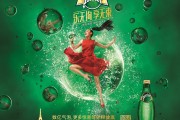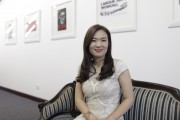Having taken up the role of Chief Creative Officer of Ogilvy & Mather China in July 2011, Graham Fink recently enjoyed his one year anniversary at Ogilvy.
Graham is a veteran of iconic agencies CDP and Saatchi & Saatchi and one of the most recognised faces in advertising. He has created some of advertising’s most memorable campaigns and won countless awards for his work.
Some of his many achievements include becoming the youngest ever president of the Design & Art Directors Association, creating ‘The Art School’, being involved in the successful London Olympic bid and winning four BAFTA’s!
This is part one of a two part interview with Graham where he shares his experiences, insights and personal experiences in advertising.
Why did you leave London for Shanghai?
After many years working in some great agencies in London, and with some fantastic people, I was lucky enough to achieve more than I had ever imagined. I then set up my own production company ‘thefinktank’ where I directed commercials and music videos for many years before going back into another agency, M&C Saatchi. In my last few years there it became one of the most awarded agencies in town. So it was time to do something completely different. When I got a call to come to China I thought ‘it’s now or never’. I’m always telling people to get out of their comfort zone and for me it was a real leap of faith. However it seems to be working out well and I have no regrets.
thefinktank’s video for Dario G’s hit Sunchyme was voted best dance video of the year and nominated for a BRIT award
Did you know anything about China before you arrived?
I remember when the new Saatchi gallery opened in London in 2008 with an exhibition of Chinese art. It caused a sensation. I was blown away by what I saw. Three artists in particular, Liu Wei, who built an entire miniature city from dog chews, and the Old Persons Home by Sun Yuan and Peng Yu which had world leaders roaming around in wheelchairs. It was very provocative but said to me that there was great creativity in China and it seemed to be opening up.
As a kid, the sheer scale of the country had always fascinated me and I had a good few photography books full of amazing pictures. The graphics and the visually arresting images. People on bicycles, Mao, calligraphy, giant statues, the huge variety of different landscapes, some of incredible beauty. These had stayed in my mind. Then just before I came out I started to look at the creative work coming out of agencies and trying to work out how I could make a contribution to the culture.
“I am fascinated by all the different types of Chinese calligraphy. I found this in the museum of Shanghai. It’s a very old traditional style, which I much prefer over the modern day simplified Chinese.” – Graham Fink
You have recently celebrated your first anniversary at Ogilvy China. Tell us about your first year and how things have evolved. What have you learned, noticed, etc? How have your views changed?
Wow! So much to take in. An incredible assault on my senses. New food, new smells, new faces. I love the journey into work each day as I see so many things that give me ideas. My mind works overtime. The juxtaposition of old and new in Shanghai is something I like. Although I guess as time moves on more of the wonderful old parts will eventually be taken over by the surge of modernity. I sometimes feel that I was very naive in the UK as I hadn’t realised the wealth of culture and the sheer monumental scale of everything. I love Shanghai and think it is one of the most amazing cities in the world. That said, I love my trips to Beijing each month especially being surrounded by so much art there. The first time I went to 798 I couldn’t believe it. I was taking hundreds of photographs and scribbling down so many ideas into my notepad that smoke was coming off my pencil!
“Media buyers take note. Think carefully about where you put your message. I mean would you trust this place to do your face lift?” – Graham Fink
How does the Chinese Ad industry compare to London?
The main difference is that China is a young market when it comes to advertising, as it only started doing it 15-20 years ago. Therefore there is less sophistication in the ads, especially in the lower tier cities. So the overall standard of work is not as high as in the West. However I am now noticing a real change in attitude from some of our clients who want more creative work. And as more Chinese clients visit the Cannes Festival Of Creativity they are seeing the effect that creativity has on effectiveness, and therefore their business. An ad that wins creative awards and wins effectiveness awards can now be accurately measured to be 19 times more effective than the others.
What are the biggest challenges for a Brit in the Chinese Ad industry? Are there big cultural / language barriers?
Obviously there are some problems with language, but here in China most of the agency speaks English. Occasionally I need help from my assistant (Eno Jin) who helps me in some of the work reviews. And I quite enjoy it sometimes when ideas get ‘lost in translation’ it can lead to some real moments of hilarity, but funnily enough has sometimes led to an even better idea coming out of the session because I perhaps thought they meant something else. Creativity is a strange animal and was never meant to work in the way people think it should.
What were your thoughts on China’s Cannes entries this year?
Well obviously it was wonderful for China, Ogilvy and for me personally as we won the Grand Prix for Outdoor. We also picked up a shortlist for our work on The North Face. It was nice to see JWT also continuing their success from last year, plus a few other agencies. So China is beginning make some noise on the international stage which has to be a good thing. It was interesting to see that the work from China that did well was very simple and well crafted. I think a lot of local Chinese clients can learn from this.
Can you tell us a bit about the Grand Prix winning Coke campaign and its back story?
It’s becoming a pretty famous story around the world now which is great. But very briefly, I happened to be in London the day after Steve Jobs died last year and saw on the front of every national newspaper this wonderful piece of graphic design which was a tribute to the great man. Basically his profile within the Apple logo. The tiny credit underneath simply said ‘Designed by a Hong Kong student’. So after around 200 phone calls to every possible art school, college, university and polytechnic we finally tracked him down. His name is Jonathan Mak Long. A week later I flew down to Hong Kong to meet him and look at his student work. We met in a hotel and weirdly enough he was drinking a Coca-Cola. We had no idea what was to come. Anyway, two months later we were working on a regional brief for Coke and I asked J. Mak if he wanted to work on a real live brief. Some days later he sent me back an image which the second I saw it I knew it was one of best posters I had ever seen. A day later it was presented to our Coke client and the rest as they say, is history.
You could argue that your Cannes award winning piece you did with Jonathan Mak “Coke Hands” follows the Saatchi mantra “Brutal Simplicity Of Thought”. Is this something you are trying to introduce into Ogilvy China’s work?
Well I’ve always believed that the very best work is simple. So it’s something I’m always trying to do. My advice is always take everything off the ad that you don’t really need. Sometimes what a client thinks is important is not that important to the consumer. My job is to get images and messages to stay in their brains for longer and thus become more effective.
Is there more or less freedom to be creative in China compared to other countries?
Funnily enough, for all the restrictions people talk about in this country, I find there are far more creative opportunities here than in London.
What’s your proudest moment at Ogilvy China to date?
It has to be winning the Grand Prix. It certainly made my mum and dad proud.
End of Part 1












